
Often called the “Ise of Tohoku”, Kumano Taisha Shrine is in Nanyō City in Yamagata Prefecture, in grape cultivating country. Well-known for housing a god of love and relationships, Kumano Taisha Shrine is the site of Japan’s first proposal story, and a legend of three special rabbits continues to linger here.
Besides this, in mid-November every year, a large ginkgo tree, symbolic of the shrine, becomes colored in beautiful autumn foliage and is a real crowd-drawer.
This is the power spot at the forefront of Tohoku, and is a must-visit Tohoku destination at least once in your life!
- Table of Contents
-
- Kumano Taisha Shrine: One of three Kumano shrines in Japan, with a history dating back over 1,200 years
- A magnificent worship hall using building techniques passed down from ancient Japan
- The first exchange of proposals in Japan
- You’ll get good luck in relationships if you can find all three rabbits!
- Adorable omamori charms that are almost impossible to choose from
- Take a breather at a café where you can enjoy views of the giant ginkgo tree
- Meet the white rabbit station master!

Kumano Taisha Shrine: One of three Kumano shrines in Japan, with a history dating back over 1,200 years
Located fifteen minutes away from Akayu Station on the JR Ōu Main line by train, Kumano Taisha shrine, along with Wakayama Prefecture’s Kumano Sanzan shrine, and Kumano Kotai Jinja shrine located in between Nagano and Gunma prefectures, the three shrines make up the three great Kumano shrines of Japan.
One of the most historic shrines in Tohoku, the shrine was rebuilt in 806 under the orders of the emperor Heizei, and is home to important historical and cultural relics such as the Honzon Buddha of the Heian era, the mask of Raryōwau from the Kamakura era, and a lion head from the Muromachi era.
A year-end festival is held over New Year every year, and about 60,000 people make their first shrine visit of the year there during that time.
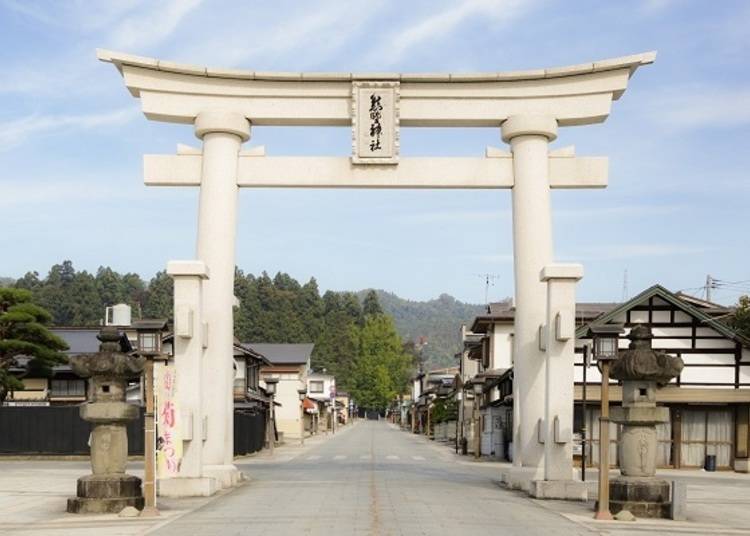
As you pass through the stone torii gate, about 100 meters down a pretty stone staircase, you’ll be greeted by a gigantic ginkgo tree. The tree was planted at the behest of Minamoto-no-Yoshiie, and are about 900 years old. It’s designated as a natural memorial of Yamagata prefecture, and is the symbol of Kumano Taisha shrine.
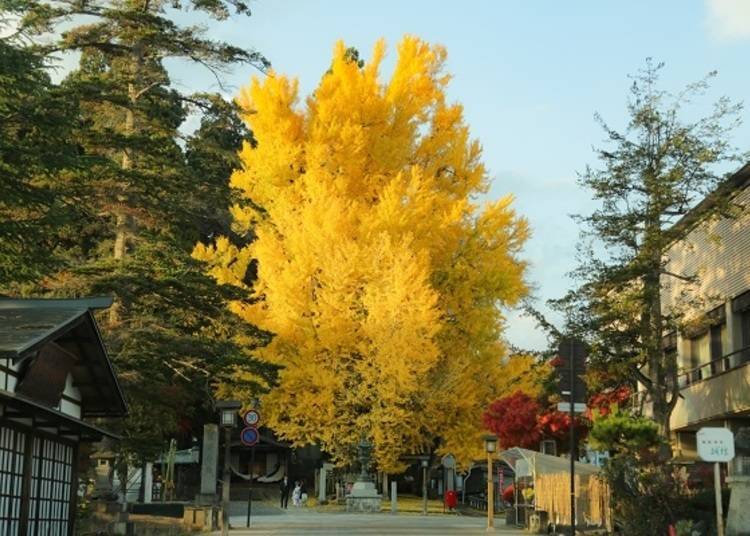
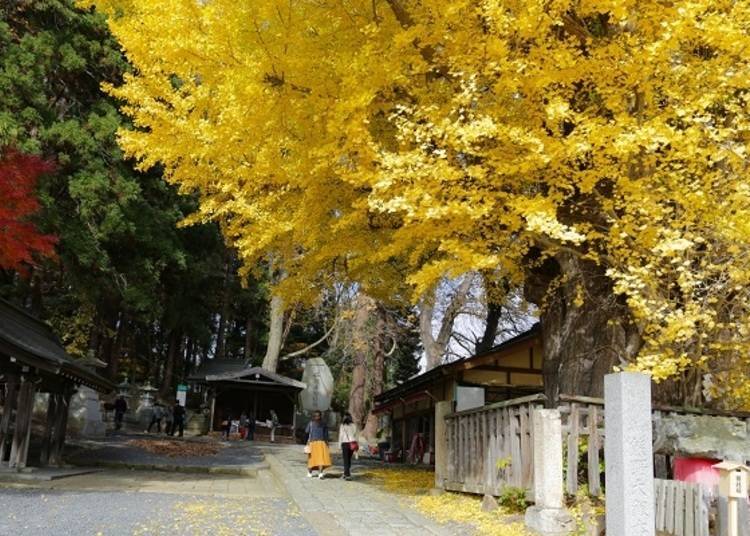
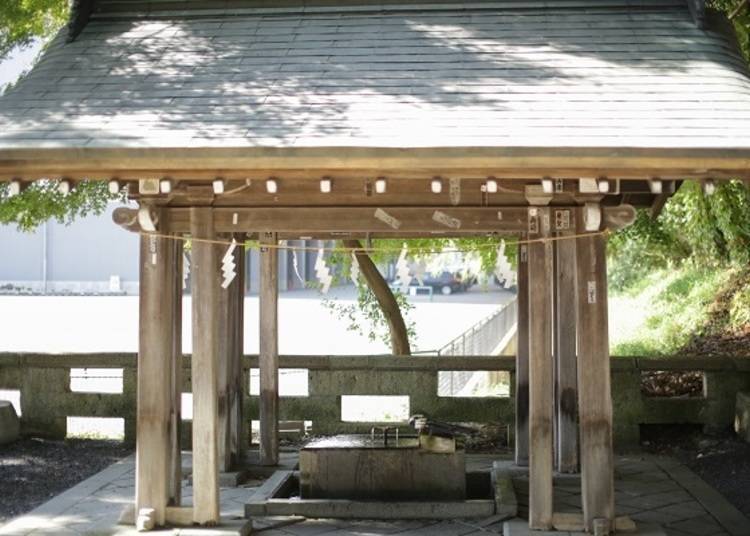
From here, climb the stone staircase called “Omisaka”, and head towards the worship hall.
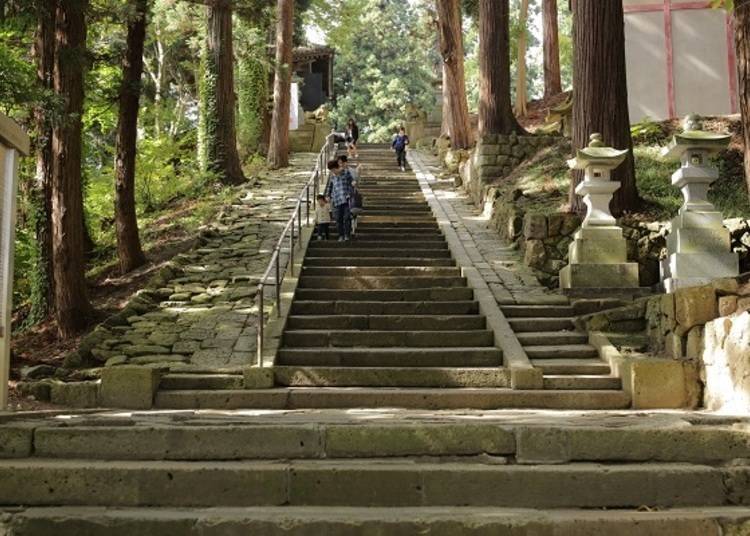
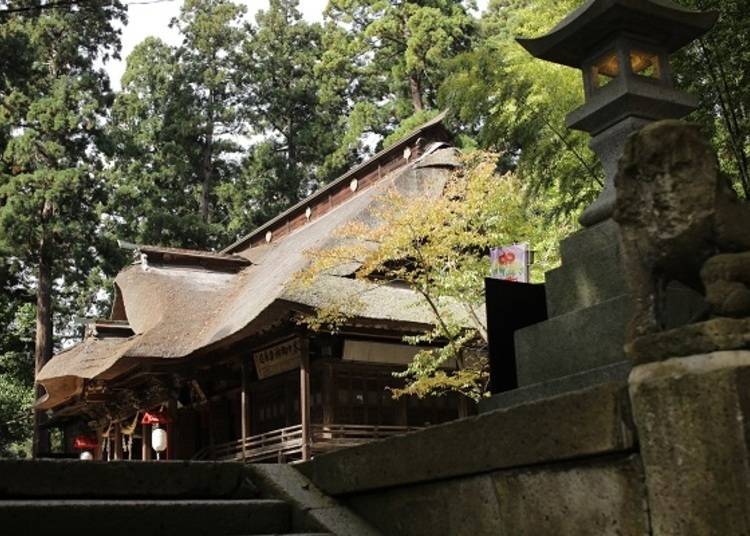
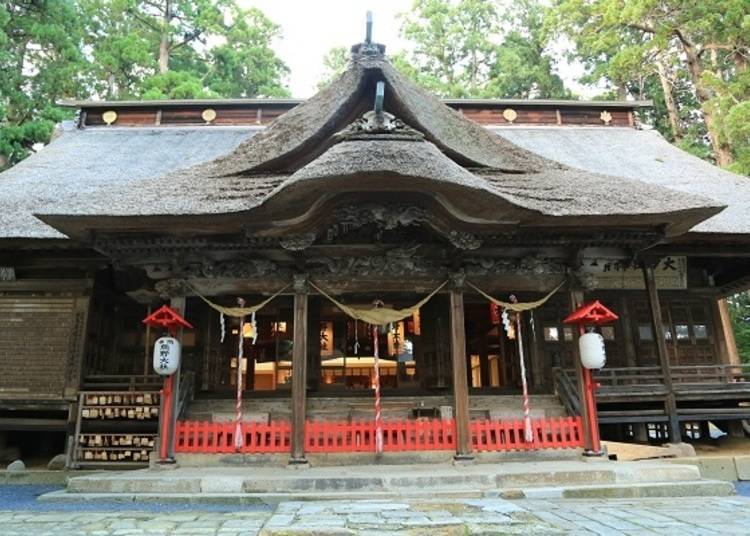
This time, we had shrine attendant Komura Kenichi to show us around the worship hall and its surroundings.
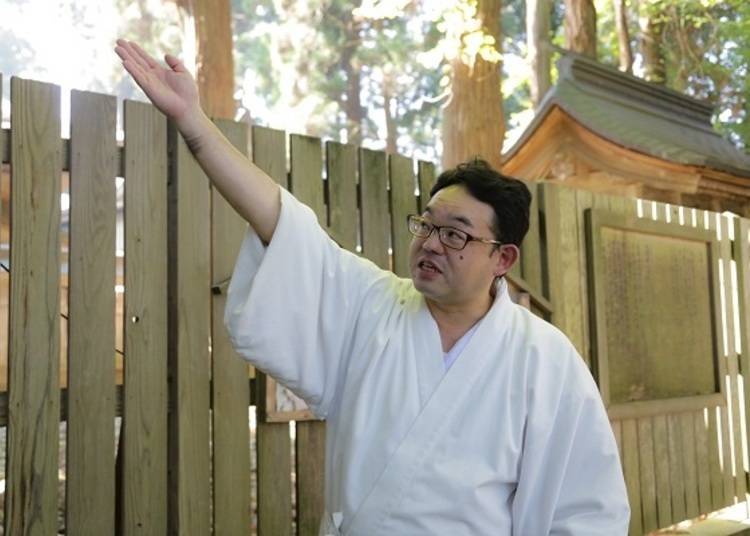
A magnificent worship hall using building techniques passed down from ancient Japan
We were first given a tour of the worship hall, which is a designated cultural artifact of Yamagata Prefecture. When the roof was renovated in 2008, an old text dating back to 787 was discovered.
The hall has been in its current form since the Edo period, over 230 years ago. However, as the wood used during its construction is found to be older than the Edo period, there is speculation that the current structure dates to much further back.
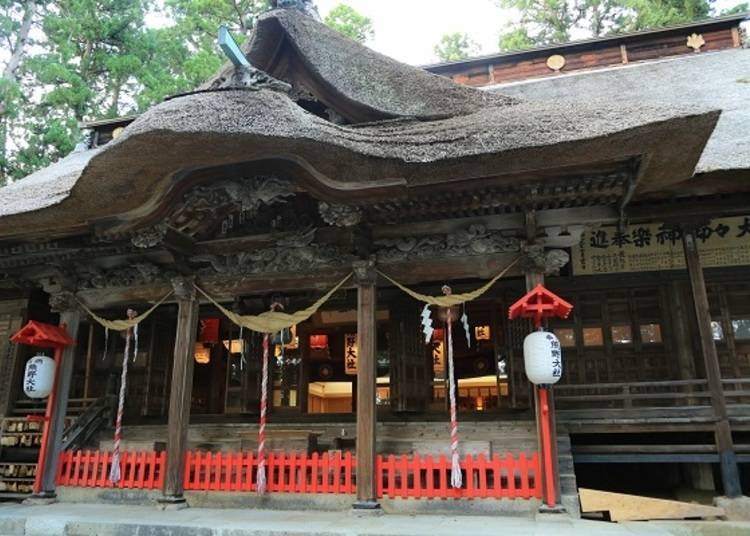
Atop the thatching of the hipped roof, there is a triangular-shaped portion called the chidori-hafu, and jutting out from it is a single beam, called the kazuru-hafu. Underneath the beam is the roof of the kouhai, where worshippers can make their prayers, and in the center of it is the kara-hafu, which features decorations and carvings in the curved space.
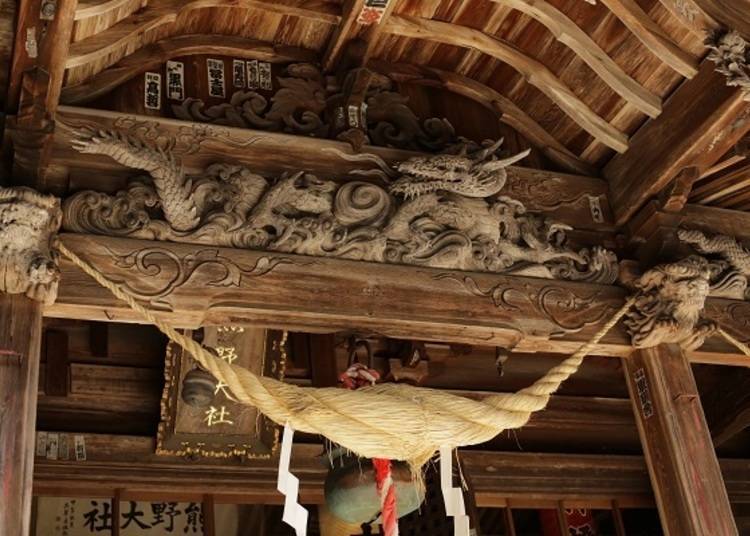
From here, we head to the center of the worship hall. Giant lanterns adorn the inside of the hall, and you can feel the rich and long history of the shrine in this space. As you are enveloped in the silence of the hall, you can experience the calming atmosphere of the place.
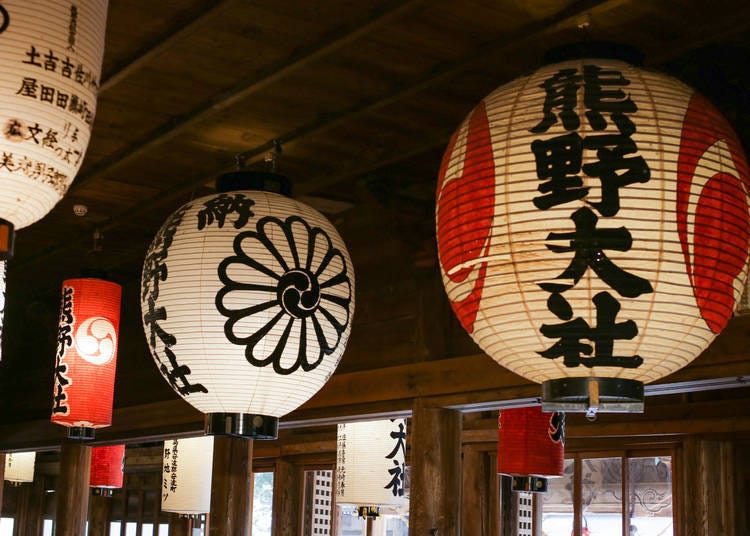
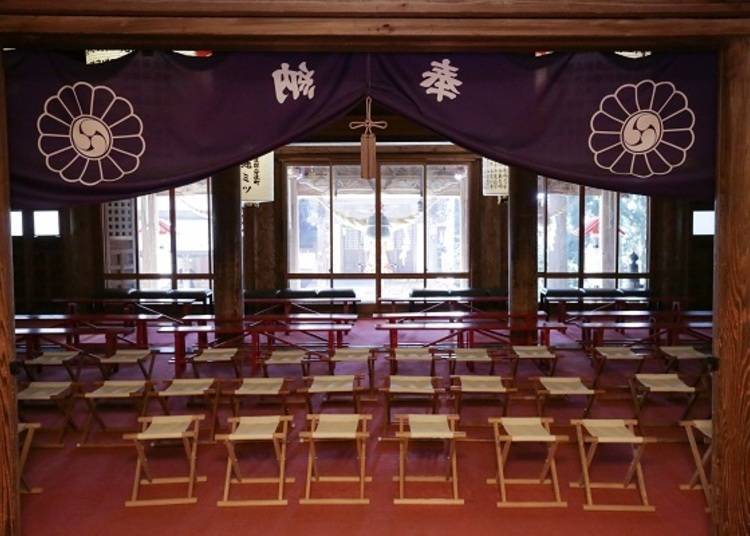
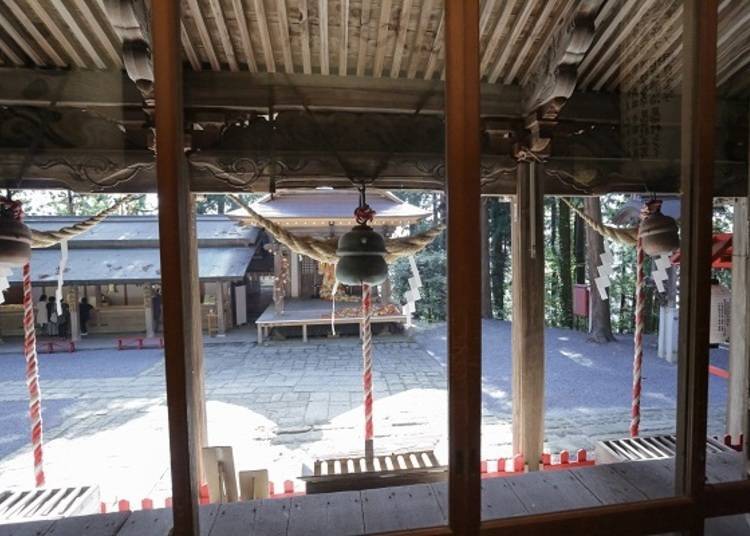
The first exchange of proposals in Japan
Komura says, “The resident deity of Kumano Taisha shrine is a god called Musuhi. Possessing the power of birth and creation, the worship of Musuhi consists of thirty gods, including the three great gods Izanami-no-Mikoto, Izanagi-no-Mikoto, and Susanō-no-Mikoto.”
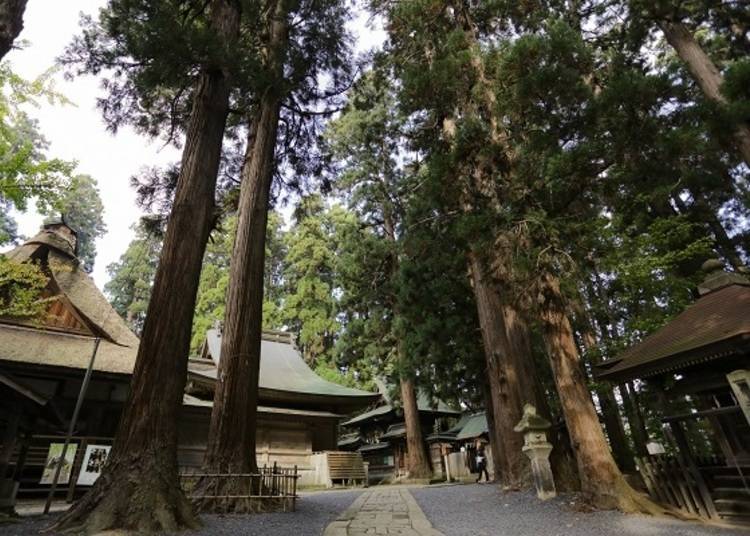
“Anyway, according to legend, the male and female great gods of this shrine made the first marriage proposal in Japan here, which is how they were married,” Komura continues. The male god, Izanami-no-Mikoto, said to the female goddess, Izanagi-no-Mikoto, ‘Ah, what a wonderful lady’, and proposed to here there and then.” It’s such a romantic legend!
It is from the names of these two gods that the word “izanau”, which means to invite or propose, came into being.
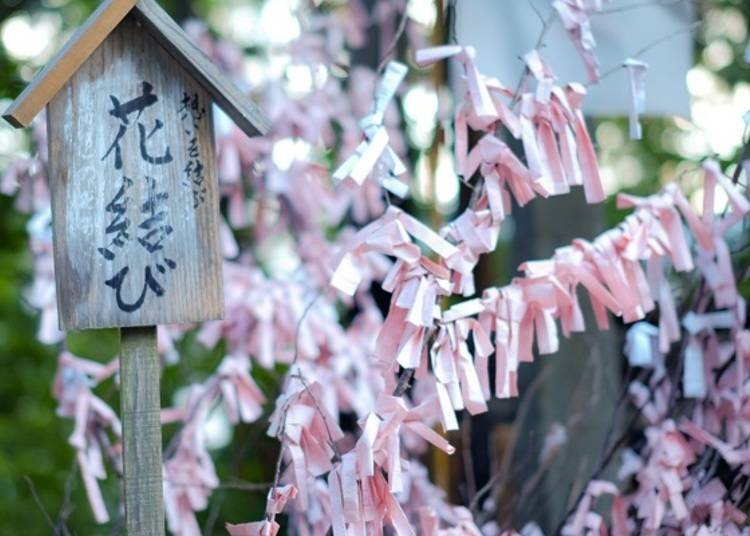
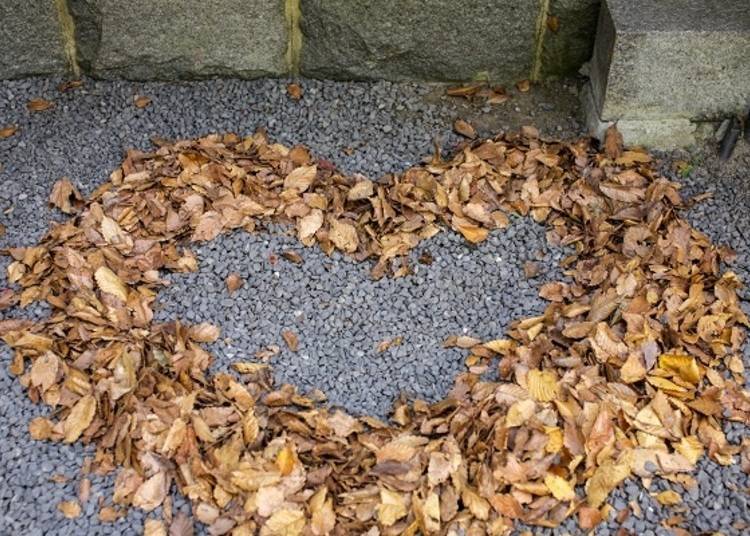
Behind the worship hall are three more halls. The first is the main hall, also known as the “hongū”, where you can pray to Izanami-no-Mikoto.
The second hall, where you can pray to Izanagi-no-Mikoto, is a prefecture-designated cultural property, and the third hall, built during the Edo period for the worship of Susanō-no-Mikoto, is a city designated cultural property.
Though it is unfortunate that you can’t enter them to say your prayers, it’s fine to ponder about their love story while observing from the outside.
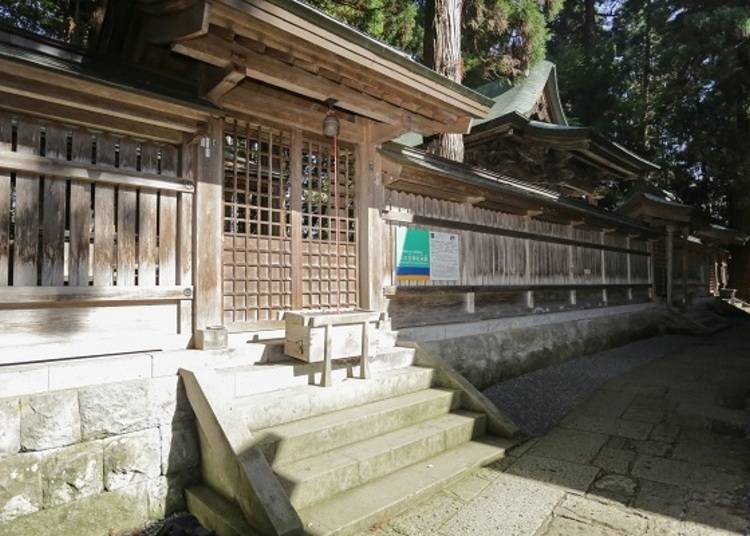
You’ll get good luck in relationships if you can find all three rabbits!
Since ancient times, rabbits have been a symbol of bonds and luck in relationships. Kumano Taisha shrine has such a story as well. Within the shrine grounds are hidden rabbits too! Let’s try finding them.
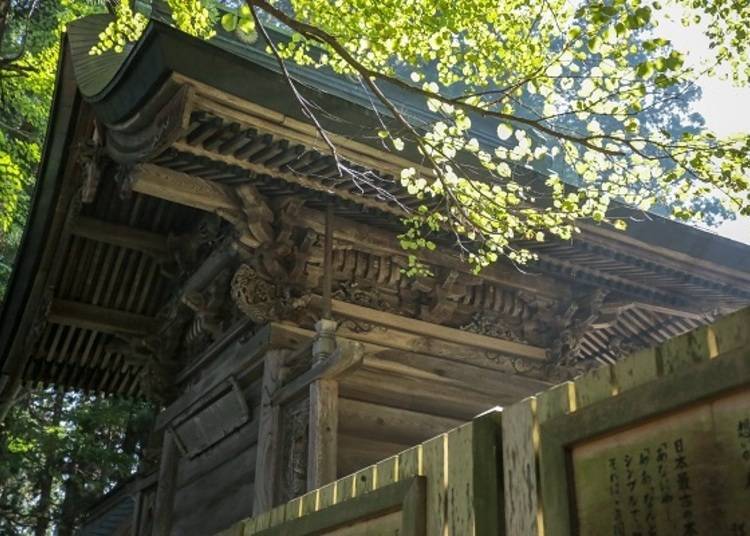
The first place Komura brought us to is the back of the main hall. Within the carvings on the exterior are three rabbits. Some time ago, a legend popped up, saying that if you find all three rabbits, your wish would come true. Because of this, the area became well-known nationwide as a power spot for love and relationships, and is frequently visited by people all throughout Japan.
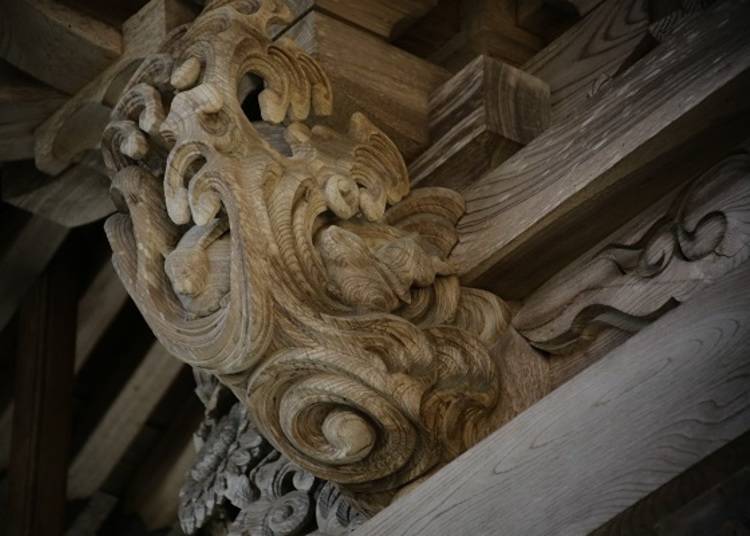
When we asked Komura for help finding the remaining two rabbits, he said, “The second rabbit is somewhere in that area, and as for the third, please find it on your own. It’s said that if you tell others about the location of the rabbits, or find out about their locations from other people, there will be no effect on your luck.”
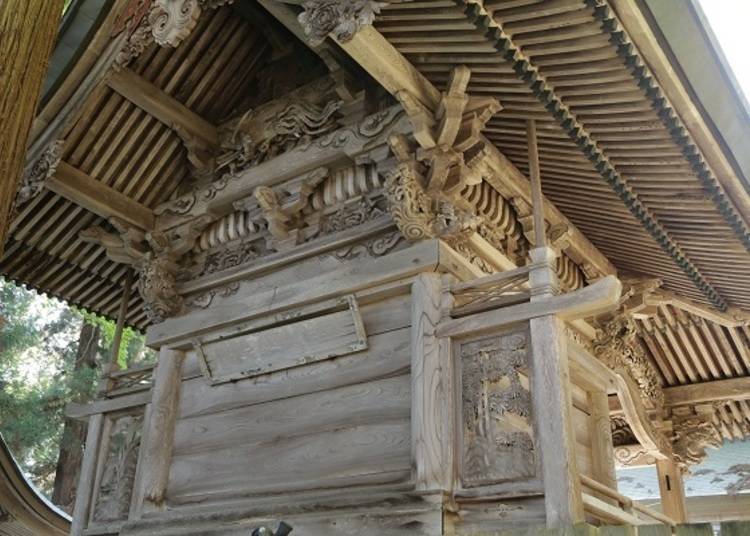
“One tip to finding the rabbits is to understand that the hidden carvings are of rabbits in the wave patterns, and wave patterns in the rabbits. Depending on the angle you’re looking at it, the shape of the carvings can change as well,” says Komura.
Hmm, it’s a difficult quest indeed! Though we found two rabbits at the end of the day, we couldn’t find the third at all.
Adorable omamori charms that are almost impossible to choose from
After we’ve searched for the rabbits, we went to the shrine office to buy some lucky charms, also known as omamori. There are many adorable omamori with rabbit motifs on sale here too!
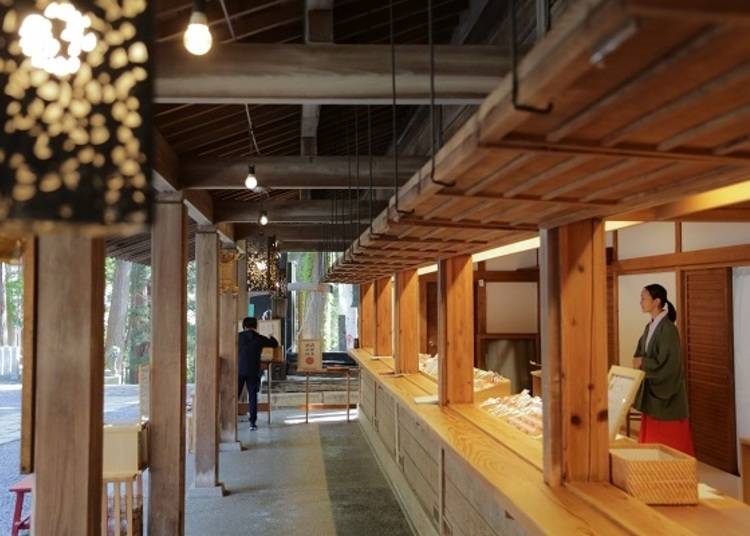
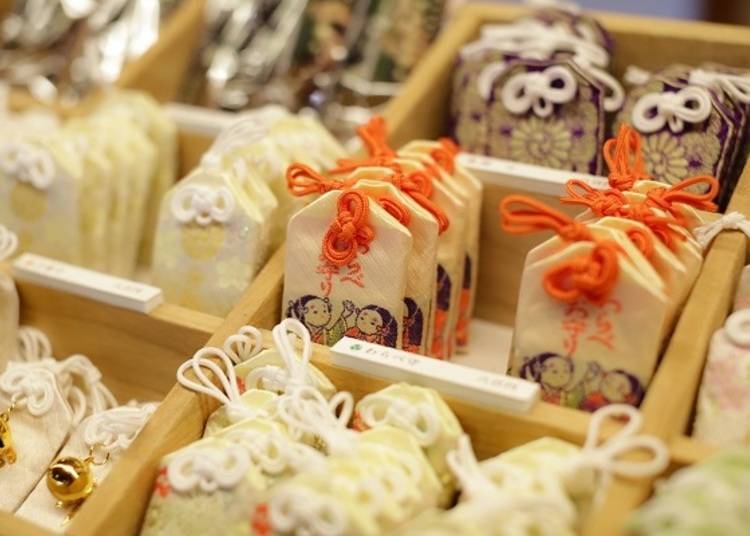
As we had trouble picking one out, we asked one of the shrine maidens to help us pick out one for bonds and relationships.
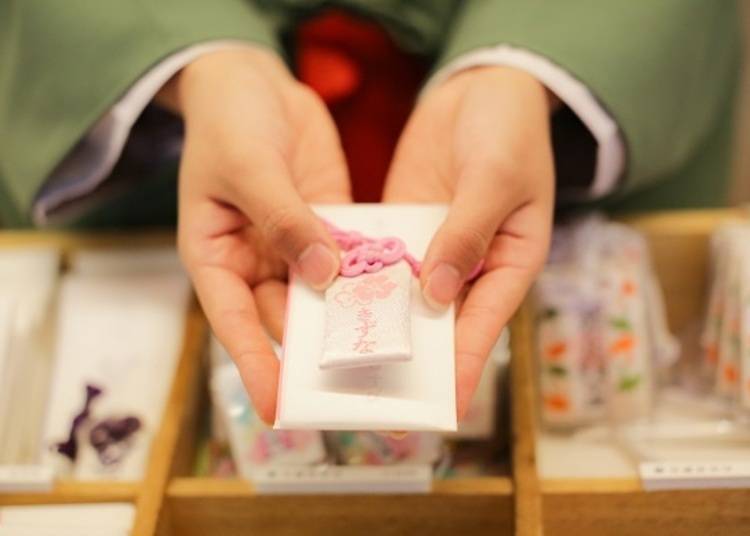
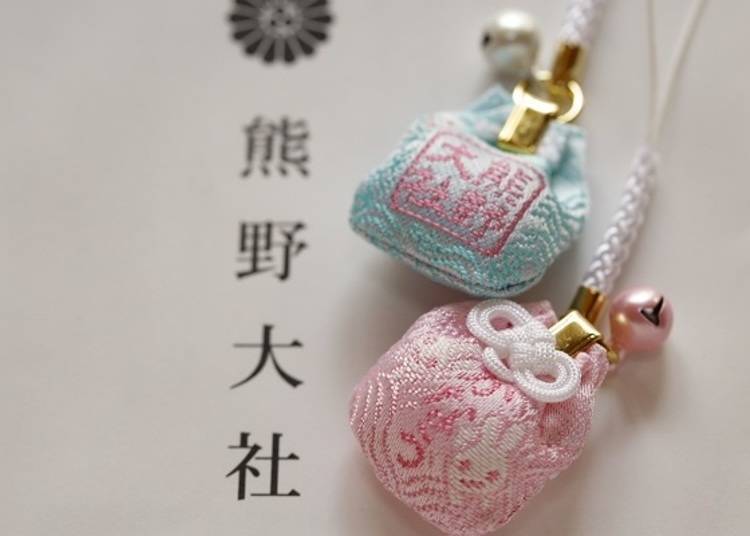
“It’s so cute!”
What we found our eyes drawn to were the rows of pink rabbits, all neatly lined up. Made in the image of the three rabbits in the shrine, there is slip of omikuji, for fortune telling, tied to the tail.
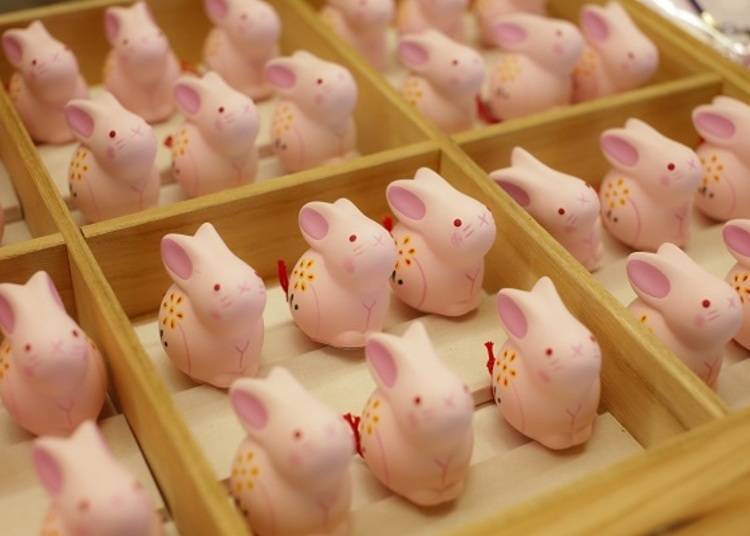
Another adorable omamori that the shrine has is the “Tamayura mamori”, only available to participants of the “Enmusubi Kigansai”, or relationship prayer festival, held during the weekend closest to the full moon each month. “Tamayura” is a word which comes from the phrase “tamashi wo yurari okosu”, which means “to shake the soul”. The color of the omamori changes each month too.
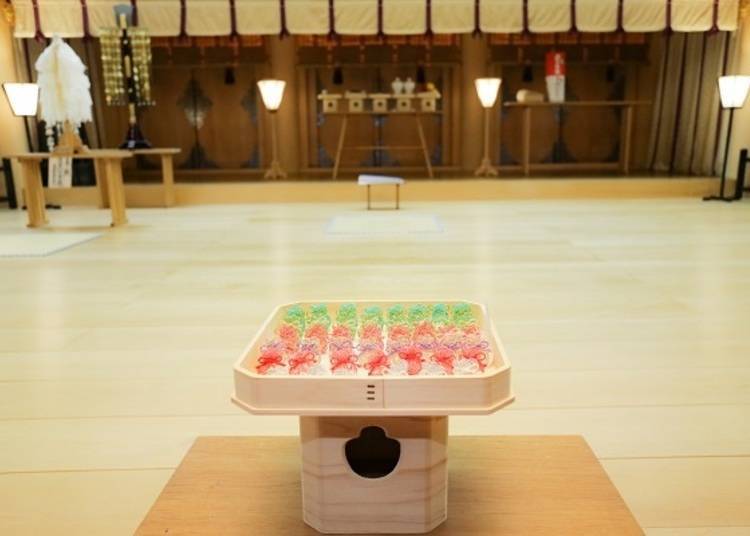
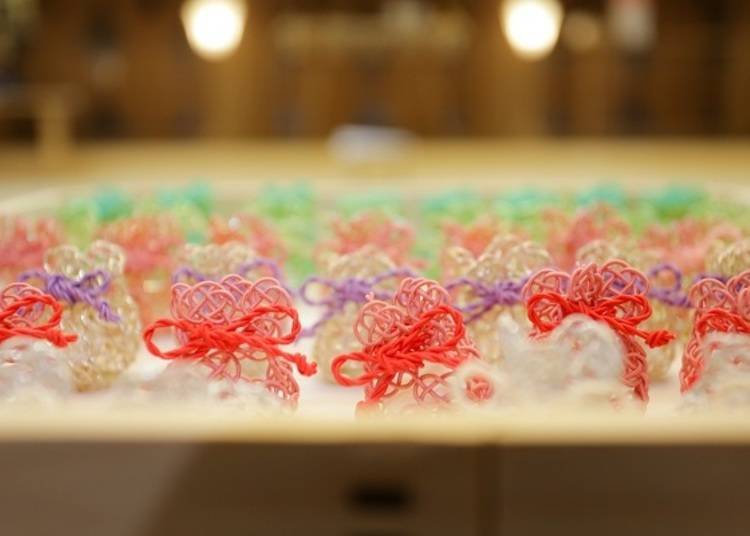
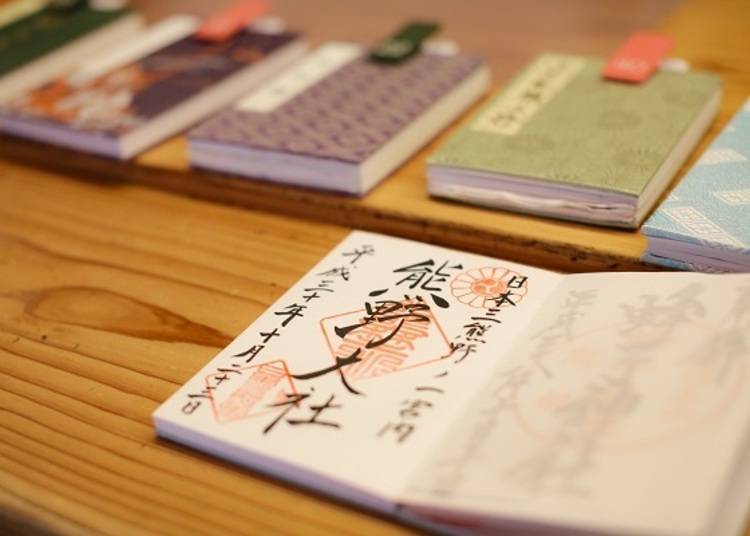
In Kumano Taisha shrine, the Daidai Kagura, a dance to honor the gods, is held every weekend from January to March (called the “shinshun sangū”) and October and November (called the “aki sangū”).
The dance performed here has its roots in the ones performed in Ise Jingū Shrine, and is one of the oldest and most revered in Japan. Right now, the dance is performed only in Ise Jingū shrine and Kumano Taisha Shrine.
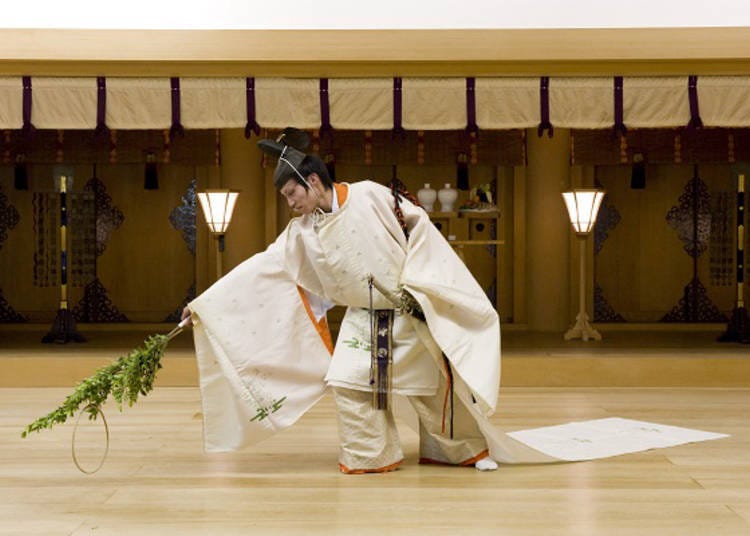
From the beginning of June to the end of September, windchimes line the sides of the main worship hall. The scenery here changes with the seasons, so you can enjoy different sights all year round.

From the magnificent structures to calm silence radiating from the shrine grounds, why not immerse yourself in this special place? You may even find some adorable rabbits to turn your luck around!
-

-
Address
3476-1, Miyauchi, Nanyo-shi, Yamagata, 992-0472
View Map -
Nearest Station
Miyauchi Station (Flower-nagai Line)
15 minutes on foot
- Phone Number 0238-47-7777
-
Address
3476-1, Miyauchi, Nanyo-shi, Yamagata, 992-0472
Take a breather at a café where you can enjoy views of the giant ginkgo tree
After you’ve finished your shrine visit, why not take a break at “Icho Café”, located at the shrine entrance? As its name implies, it’s where the famous ginkgo tree is, which is called “icho” in Japanese.
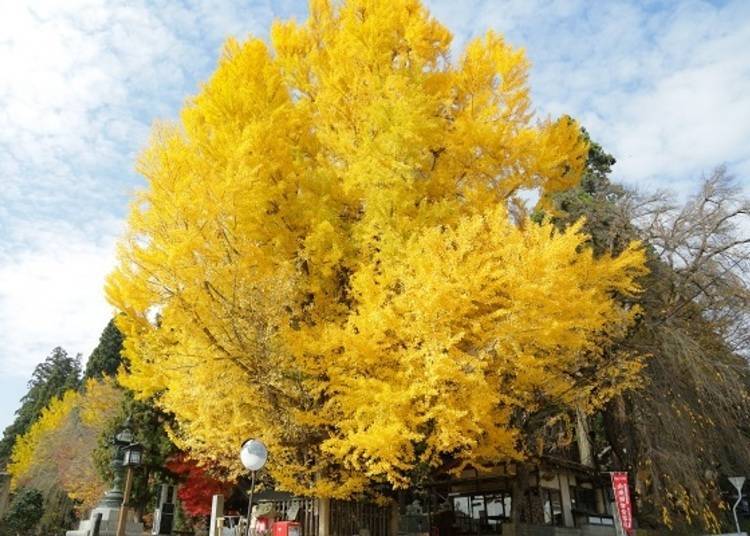
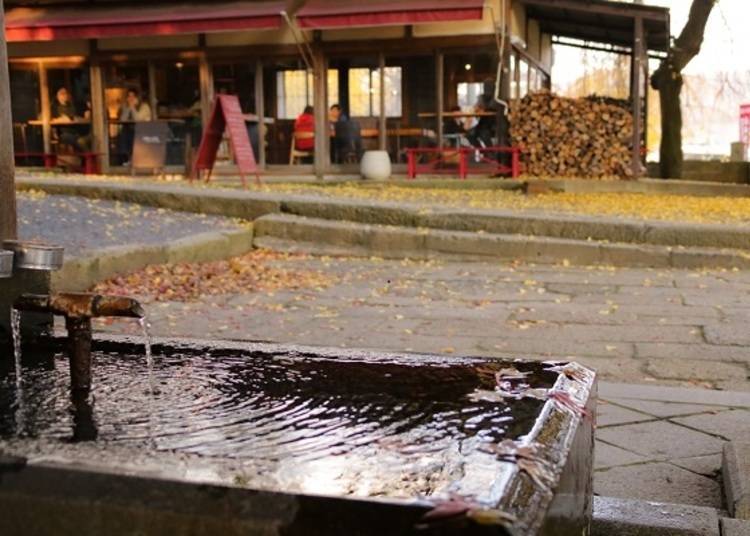
Previously, there was an old shopfront where café is now, and after some renovations by a few young entrepreneurs, the café opened in 2015. The café’s lunch sets featuring collaborations with local sake breweries, and desserts and smoothies made using locally sourced ingredients, are especially popular.

The Neapolitan pasta in the lunch menu is the result of a collaboration with a local sake brewery. The rich and fragrant tomato sauce base of the pasta is made using the sake lees from “Junmai Ginjō,” a variety of sake.

The bestselling French toast uses milk from the local Nagameyama Farm as its base, made by slowly steeping bread into the egg and milk mixture, then toasting on a copper plate. The outside is crisp, with a chewy centre.
The smoothies have a gentle and refreshing taste, having been made with fresh apples and honey.
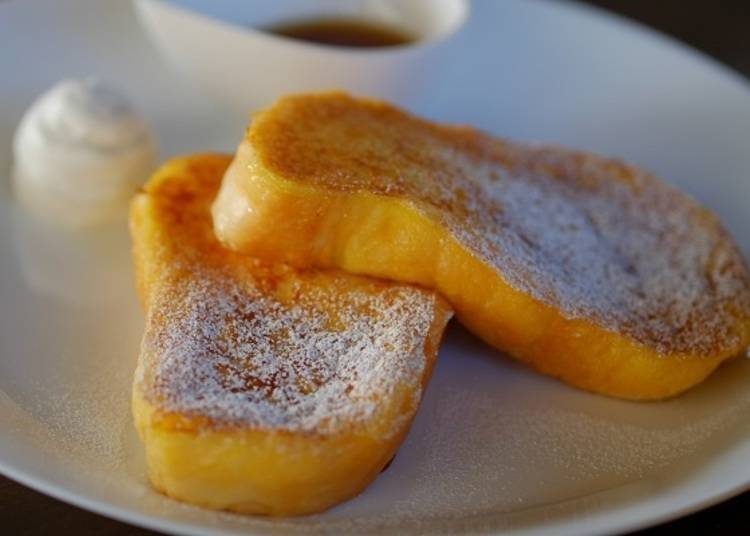

In autumn, you can see the leaves from the ginkgo tree gently float down to the ground, coloring the immediate vicinity in a sea of lush gold. You can view the scenery through the glass windows while enjoying an unforgettable time in the café. It’s a place that puts you at ease and welcomes you back again and again.

-
icho caféicho cafe
- Address 3707-1, Miyauchi, Nanyō-shi, Yamagata-ken
- Phone Number 080-5734-0909
Business hours: 11:00 a.m. to 6:00 p.m. (until 5:30 p.m. from December to March)
Lunch time from 11:30 a.m. to 2:0 p.m.
Closed on Tuesdays
Meet the white rabbit station master!
While on the topic of rabbits, it’s not just Kumano Taisha shrine which has them. Surprisingly, the station master of the nearest station is a white rabbit too?!
With our curiosity piqued, we head down to Miyauchi Station, the nearest station to the shrine, to see what’s going on.
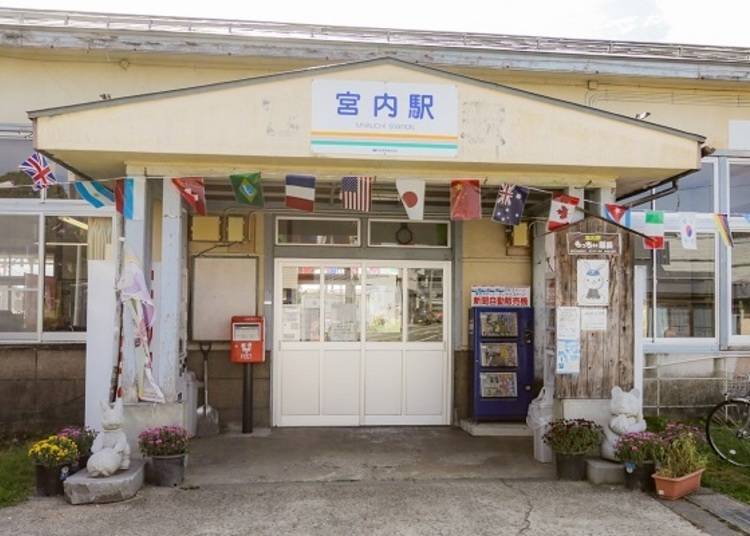
The Flower Nagai line is a 30-kilometer long local line, connecting JR Akayu Station part of the Yamagata shinkansen, to Arato Station in Shirataka-machi, a small city. The place is also well-known as the setting of the 2004 Japanese comedy film, Swing Girls. Miyauchi Station is a small station two stops away from Akayu Station.

When we reached the station, we went straight through the fare gates and onto the platform (when entering the platform from outside the station, there’s no need for an entry ticket). Follow the signs at the station, and you’ll reach the office of the station master, Mocchii. At the entrance to the office, are stated five rules to observe when meeting station master Mocchii.
Petting, loud noises, and flash photography are not allowed, and once you open the door, you’ll be greeted by Mocchi, who is eating snacks! As an elderly rabbit, Mocchi doesn’t like to move around much, but Mocchi is still bursting with cuteness and loveliness.
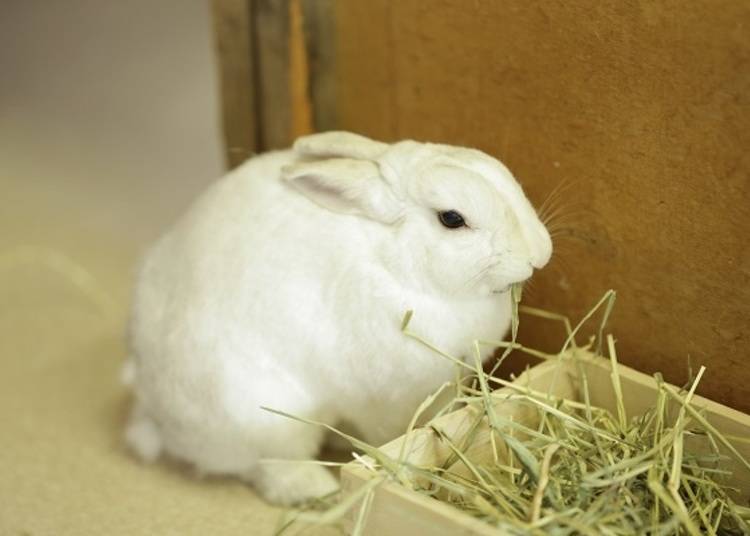
This is the only train station in Japan with a rabbit for its station master. The media frequently comes down to interview Mocchi, and Mocchi’s photo collections have many fans too. As Mocchi has off days too, be sure to check with the station before going down.
-
Yamagata Railway Flower Nagai Line: Miyauchi Station山形鉄道フラワー長井線 宮内駅
- Address Miyauchi, Nanyō-shi, Yamagata-ken
- Phone Number 0238-40-0560
Business hours: 10:00 a.m. to 5:30 p.m.
Closed on Wednesdays, and from December 30 to January 3
On your pilgrimage to the historic god of bonds and relationships at Kumano Taisha Shrine, it’s a journey of countless discoveries and meetings.
The town is also compact, being centered around Kumano Taisha Shrine, and is easy to explore. Why not make a visit to this power spot of Tohoku, where rabbits await to welcome you?
Photos: Tomomi Sato
- Area
- Category
*Prices and options mentioned are subject to change.
*Unless stated otherwise, all prices include tax.
Popular Tours & Activitiess
Recommended places for you
-

Asamushi Onsen
Hot Springs (Onsen) & Bath Houses (Sento)
Aomori, Hirosaki And Hachinohe
-
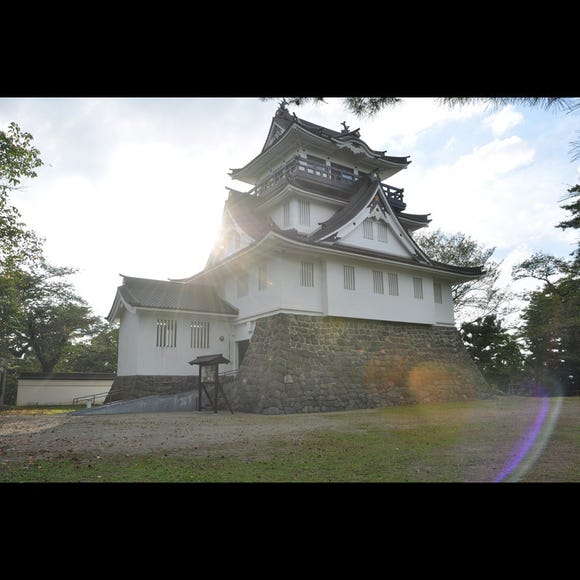
Yokote Park
Parks
Surrounding Areas Of Akita
-

Oirase River
Rivers, Lakes & Canyons
Other Surrounding Areas Of Aomori
-
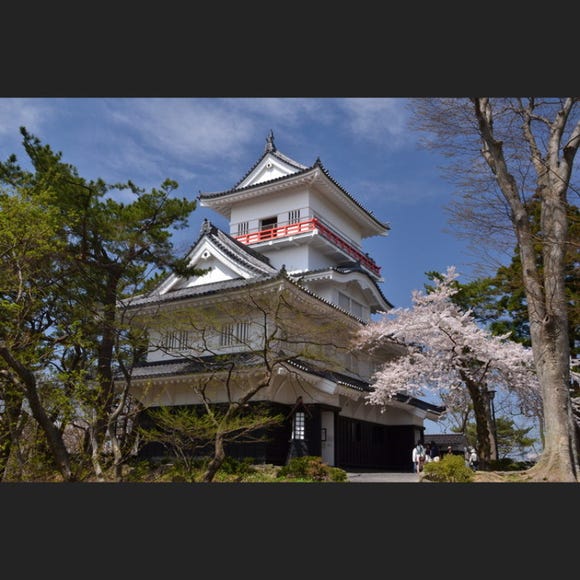
Senshu Park
Parks
Surrounding Areas Of Akita
-
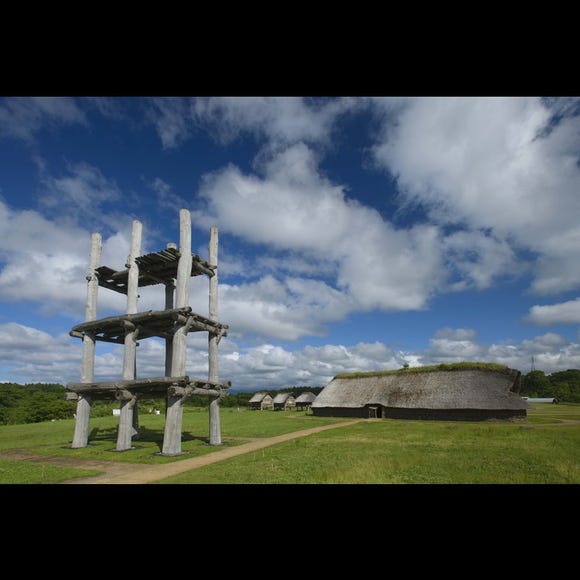
Sannai-Maruyama Site
Village Ruins
Aomori, Hirosaki And Hachinohe
-

Aomori Museum of Art
Art Museums
Aomori, Hirosaki And Hachinohe
-

Dining in Yamagata: Must-Try Foods & Top Restaurants Near the Station
by: ShiroKu inc.
-

Shopping in Akita: 11 Must-Buy Souvenirs & Where to Shop Near the Station and Airport
by: ShiroKu inc.
-
Ad

Advice from the Experts at Hitohira: Here's How to Choose the Best Japanese Knife
-
Ad

Just one stop from Haneda Airport! "Truly Japanese!" Food, Fun, and Knowledge Gather at HICityⓇ Enjoy An Electrifying Night at "Japan Night Fever: Haneda Innovation City"
by: Yohei Kato
-

What to Buy in Aomori? 11 Aomori Souvenirs Locals Actually Recommend
by: ShiroKu inc.
-

Aomori's Quiet Side in Autumn: 5 Scenic Spots in Hachinohe According to a Local
by: Marco Blasco
-

Autumn in Japan 2025: Fall Foliage Forecast & Where to Enjoy the Colorful Leaves (+Tour Info)
-

We Board Japan's 'Setsugekka' Resort Train And Have An Incredible Journey Through The Heartland
-

Japanese Foods List: 16 Crazy Tasty Japanese Tohoku Region Dishes You've Never Heard of
by: Guest Contributor
-

18 Travel Secrets of Aomori Japan: Guide for Sightseeing, Shopping, and More
by: Guest Contributor
-

Exploring Sendai in the Footsteps of Samurai Date Masamune: Castle Ruins to VR Museums!
-

8 Unfamiliar (But Totally Normal) Customs in Japan!













